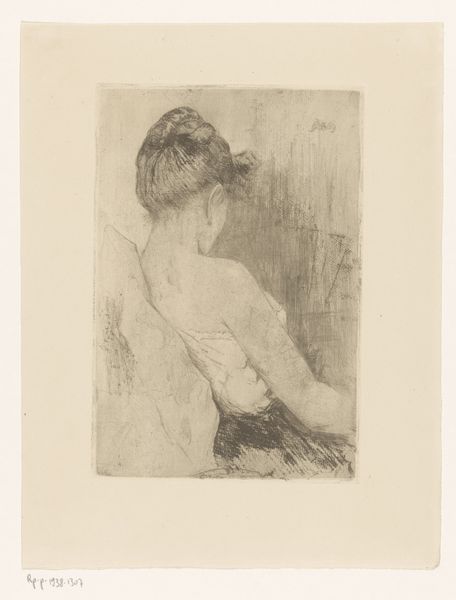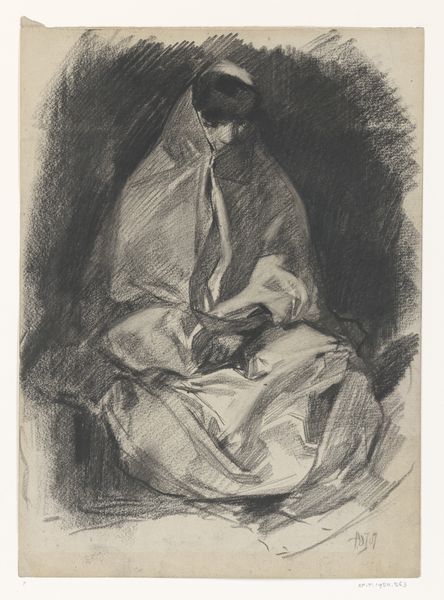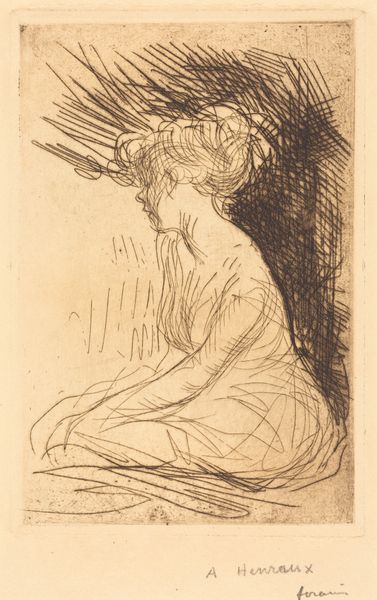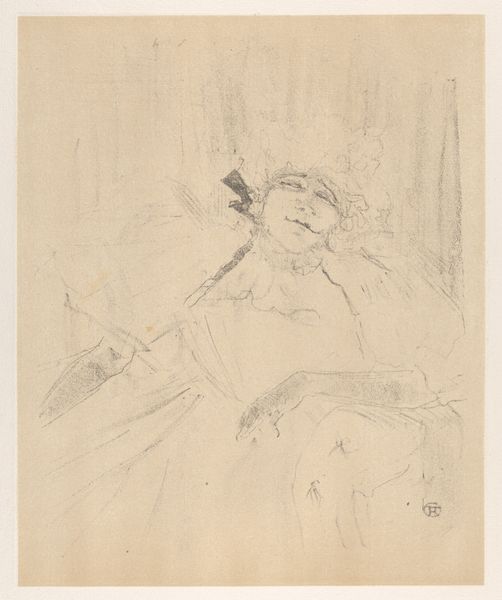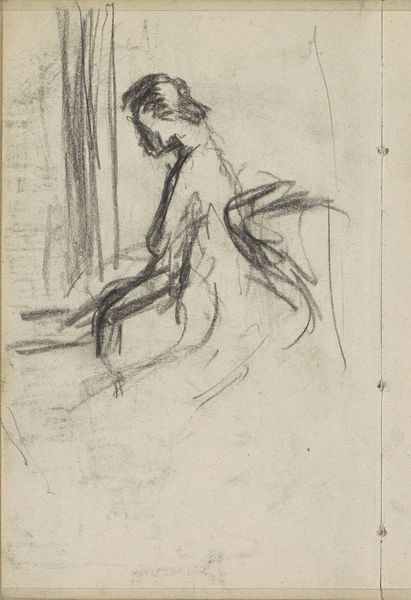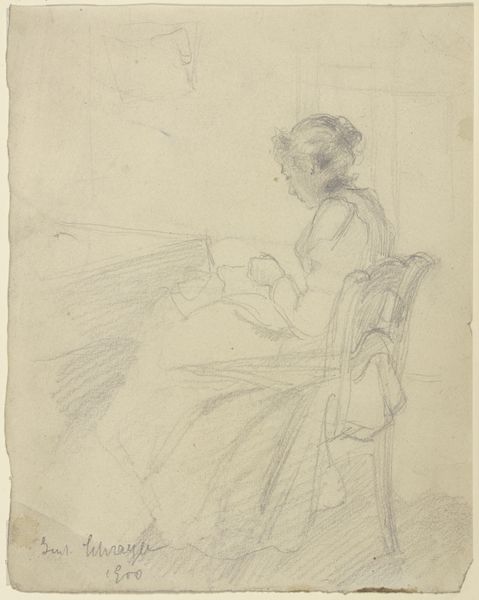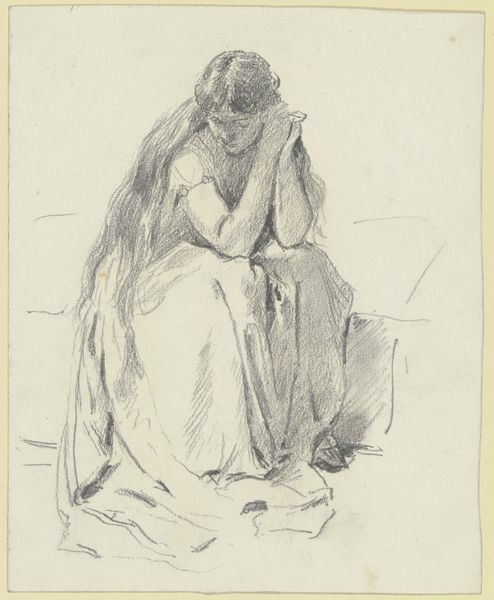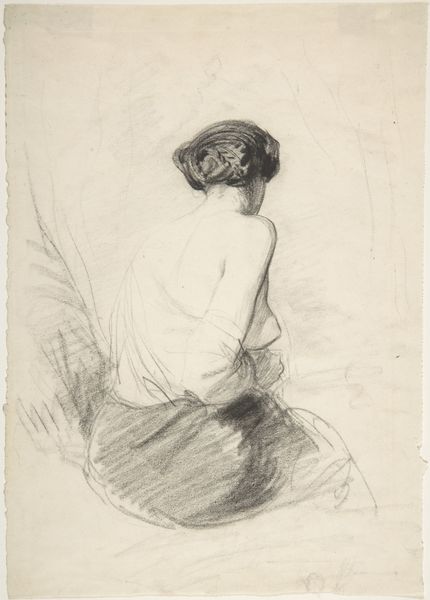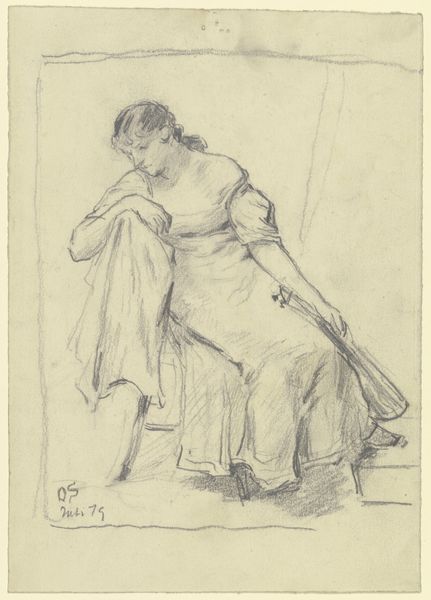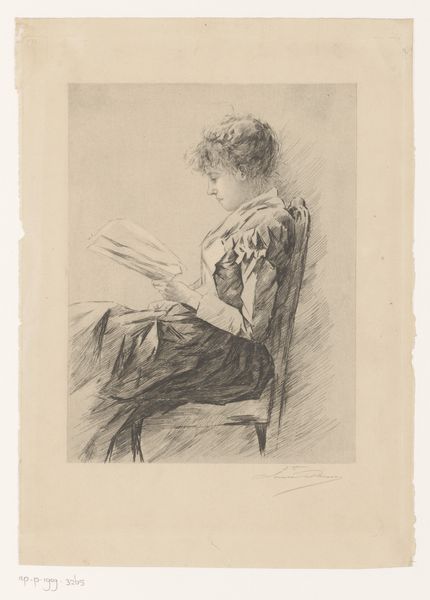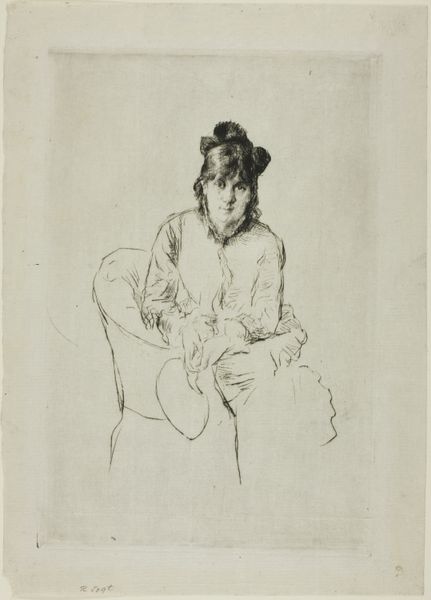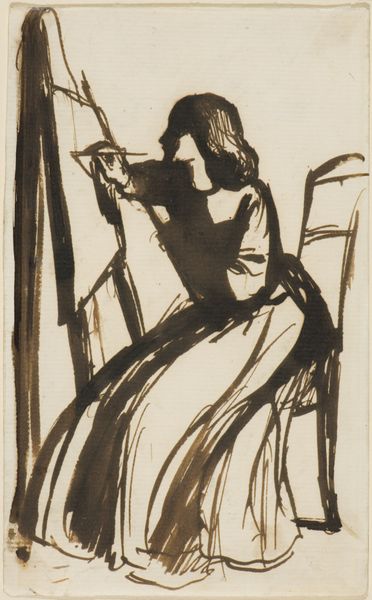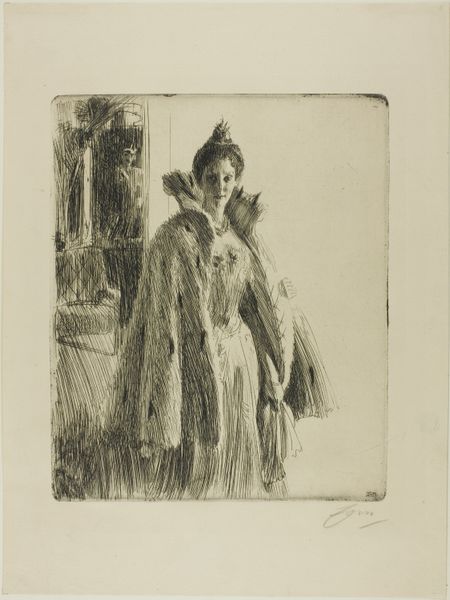
De vrouw van Wilhelmus Johannes Steenhoff met haar kind aan de borst 1873 - 1932
0:00
0:00
drawing, watercolor
#
portrait
#
drawing
#
charcoal drawing
#
figuration
#
oil painting
#
watercolor
#
watercolour illustration
#
academic-art
Dimensions: height 415 mm, width 304 mm
Copyright: Rijks Museum: Open Domain
Editor: This watercolor, “De vrouw van Wilhelmus Johannes Steenhoff met haar kind aan de borst,” painted between 1873 and 1932, is an intimate family portrait. The muted tones create a sense of quiet domesticity. How can we interpret this depiction of motherhood within its historical context? Curator: I see this piece as participating in a longer history of representing motherhood, but with specific interventions. During this period, portrayals of mothers were often sentimentalized, emphasizing purity and self-sacrifice. This image seems to navigate those expectations while subtly resisting them. Notice the woman’s gaze: she looks down at the child, but it also feels somewhat distant, detached. Editor: So, are you saying that the portrait challenges conventional expectations of women in that era? Curator: Precisely. Consider also the artist being her spouse. What does it mean that her own husband is looking at her while breastfeeding. We are then implicated in his gaze. How much does it invite us in, and how much does it exclude us? Is it an act of domesticity and affection, or could we view this through a more critical, perhaps even feminist lens? What feelings does it evoke in you? Editor: That’s fascinating, I hadn't considered the implications of the artist being her husband, adding a layer of complexity to its depiction of intimacy and privacy. I am seeing the woman, not necessarily only as a mother, but as a person that performs mothering as part of many possible societal expectations. Curator: Exactly! By analyzing the image in terms of gender, power dynamics, and societal expectations, we unlock deeper meaning within the work. Editor: It’s eye-opening to see how one image can spark so many discussions on historical and gender-related issues! Curator: Indeed. Art is never truly silent.
Comments
No comments
Be the first to comment and join the conversation on the ultimate creative platform.
